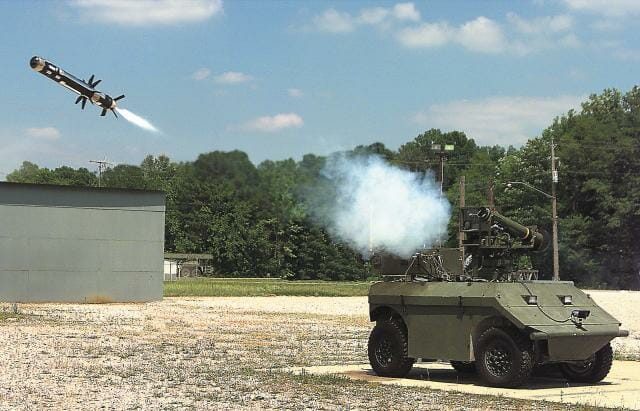Unmanned military combat vehicles are unlikely to dominate the modern battlefield – at least not for the foreseeable future. While science fiction movies have warned of a world of thinking machines designed for combat, which invariably “rise up” against their human masters, the truth is that machines really don’t make good warfighters.
According to new research from GlobalData, while unmanned ground vehicles (UGVs) are in development for armed forces around the world, defense industry experts contend that manned tanks are still best. GlobalData quoted Royal United Services Institute land warfare research analyst Nick Reynolds, who said he was skeptical about future armored vehicles being unmanned any time soon.
“UGVs may be controlled remotely or they may be autonomous,” explained Reynolds. “If they are controlled remotely, they are reliant upon data links, which present a vector for attack – they may be hacked, or the signal may be disrupted. Alternatively, UGVs may be autonomous, but this presents its own problems – the technology must be mature enough for the vehicle to be useful.”
For those reasons, Reynolds argues humans are still far better than their robotic counterparts at performing even the most basic functions, such as navigating around obstacles, determining suitable off-road routes through rough terrain, and interpreting the surrounding environment. “Most UGVs intended for combat roles are still quite a way off from being practical.”
the evolution of the calvary: from horse to horsepower
Driverless tanks may become necessary for another reason, however. Fewer younger people are opting to drive. It is true that car ownership has continued to increase in recent years, with the United States still topping ownership of cars worldwide – with 832 vehicles in operation per 1,000 people. However, according to research from The Wall Street Journal published last May, younger people aren’t as eager to drive as past generations.
This was a trend that began with millennials and continues with Generation Z. Only about a quarter of 16-year-olds had a driver’s license in 2017, a sharp decline from past generations. Factors include the cost to buy a car, fuel costs, insurance and registration – and also the availability of ride sharing services such as Uber and Lift.
This could impact the military – and there is a significant lesson from history.
Cavalry had been a major component of armies around the world since antiquity. Horses played a major role in the Spanish conquest of the Americas, providing an advantage that countered the superior numbers of the Inca and Aztec Empires. For three millennia mounted soldiers as scouts were the eyes of advancing armies while the cavalry charge often broke the enemy lines.
Yet, within a generation the horse disappeared from the battlefield.
The reason was that while most people could ride a horse and many owned at least one in the 18th and 19th century, the invention of the automobile changed everything. Cities were retrofitted to accommodate cars, while trucks – not to mention trains – moved armies.
It is true that Nazi Germany invaded the Soviet Union with more horses than Napoleon had used in his invasion of Russia nearly 150 years earlier, but by the Second World War no nation largely used cavalry. The last true “charge” took part during the Battle of Schoenfeld near the end of the Second World War in March 1945, when Polish cavalry, supporting a Soviet infantry overwhelmed a German artillery position.
Such were isolated events. Cavalry disappeared not only because the machine gun and modern artillery made it less effective, but simply because few soldiers knew how to ride a horse.
If historical precedence plays out in a similar fashion, the U.S. military could face a time when its soldiers don’t know how to drive. Already there has been a transition to automatic transmissions. This is almost necessary as fewer people know how to drive a manual transmission (stick shift).
Autonomous Weapons Backlash
Numerous futurists and tech evangelists – including the likes of Elon Musk – have signed a pledge that calls for “laws against lethal autonomous weapons.” The pledge was introduced in 2018 during the annual International Joint Conference on Artificial Intelligence by the Future of Life Institute.
More than 170 organizations and 2,400 individuals agreed to the call to ban the development of autonomous weapons.
However, there is a difference between an autonomous weapon and a self-driving tank.
“With autonomous vehicles seeing a flurry of development in the military arena, the tank as we know it may be on its way to becoming a thing of the past,” said GlobalData’s Army Technology writer Harry Lye, via a statement. “The merits of these new UGVs are size, affordability and survivability, a cocktail that militaries across the world are keen to get hold of as they face threats from increasingly unconventional foes.”
Such systems could be utilized alongside human warfighters, who will likely still be the ones who make the final decisions such as when to fire at an enemy. In this way the autonomous tank won’t be so autonomous, even if it is self-driving.
“Coming in different sizes and configurations, these vehicles fulfill different missions and different roles; they point to a future of augmenting ground forces with unmanned systems that is seemingly just across the horizon,” added Lye, who pondered, “But will they ever be able to replace the manned vehicles that came before them?”




